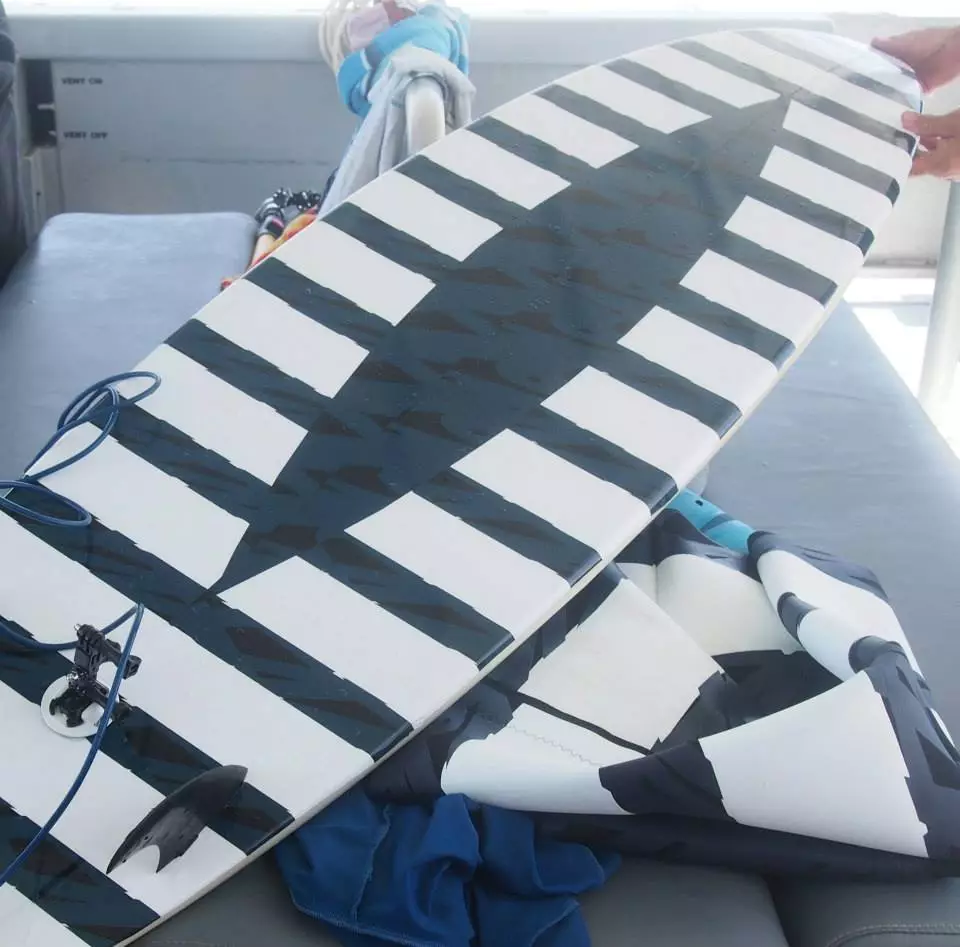Worldwide, around 100 people are attacked by sharks each year. The anxiety this produces isn't helped by the fact that traditional black wetsuits make divers and surfers look like seals, and it’s not a good idea to dress up as a shark’s favorite snack before going into the water. Australian company Shark Attack Mitigation Systems (SAMS) is developing wetsuits designed to deter shark attacks rather than ring the dinner gong by using disruptive patterns that sharks have trouble seeing, or that make them think twice about attacking.
Over the years, there have been a number of attempts at an anti-shark suit. In the 1970s, a chainmail suit was developed to protect against bites from smallish sharks and there have been proposals for electric suits and that can shock an attacker and systems like Shark Shield have been developed which interfere with a shark’s electric senses. SAMS takes a different approach by employing camouflage and deterrence based on shark behavior and anatomy.
Sharks have incredible senses. They have a sense of smell that puts laboratory equipment to shame, being able to detect a drop of blood 3 miles away. They can also detect faint electric currents with enough accuracy to not only identify prey, but to distinguish wounded prey. However, sharks depend on vision for going in for the kill. If this can be countered or confused, the attack may be avoided or delayed long enough for a diver to reach safety.

SAMS is based on research by Professor Shaun Collin and Professor Nathan Hart by the Oceans Institute at the University of Western Australia. They looked at how sharks see underwater by dealing not only with their behavior, but also the anatomy of the shark’s eye and with the molecular biology of the retina in several large shark species. This way, they were able to determine the eye’s optical characteristics and which colors and shapes caught the shark’s eye and which ones it was less likely to notice.
These findings were then applied to three scenarios: Swimming on the surface, diving to 5 m (15 ft), and diving to 15 m (50 ft). These were conducted in Mediterranean or subtropical water in different lighting conditions. Eventually, this was boiled down to a formula that takes into account color, contrast, pattern size, pattern shape, water depth and distance from the shark.

Sharks see in black and white, but as any cinematographer can tell you, color alters how light is reflected. That’s why when Superman made his debut in black and white films his costume used brown instead of red. The contrast in monochrome was better. Something similar applies to dodging sharks. Different colors and shapes work differently at various depths and distances. In other words, what works best for a surfer paddling through the waves isn't the same as what a diver needs at 100 ft (30 m) down.
From this, different patterns and colors with various contrasts could be worked out that sharks either had trouble seeing or were wary off as potentially dangerous or, at least, not very tasty. These were tested at sea with real sharks – fortunately, with Chum-filled buoys standing in for divers.

This boiled down to two basic patterns. The first was the Cryptic Pattern, which is designed for divers and swimmers. According to the developers, sharks have trouble seeing this pattern because of its disruptive coloration blends into the background. The second is the Warning Pattern for surfers, which is intended to make the wearer look less like something delicious and more like something nasty by imitating the warning patterns of some fish that send out the message “stay away.” The developers say that it won’t necessarily stop a shark from attacking, but it has a strong probability of getting one to hesitate, giving the wearer a chance to escape.
Wetsuits aren't the only target of the SAMS technology. Since things like surfboards, kayaks and scuba tanks also get attacked regularly, the patterns are available as skins or stickers to protect them as well.
The video below shows some of the testing conducted on the patterns.
Source: Shark Attack Mitigation Systems



















